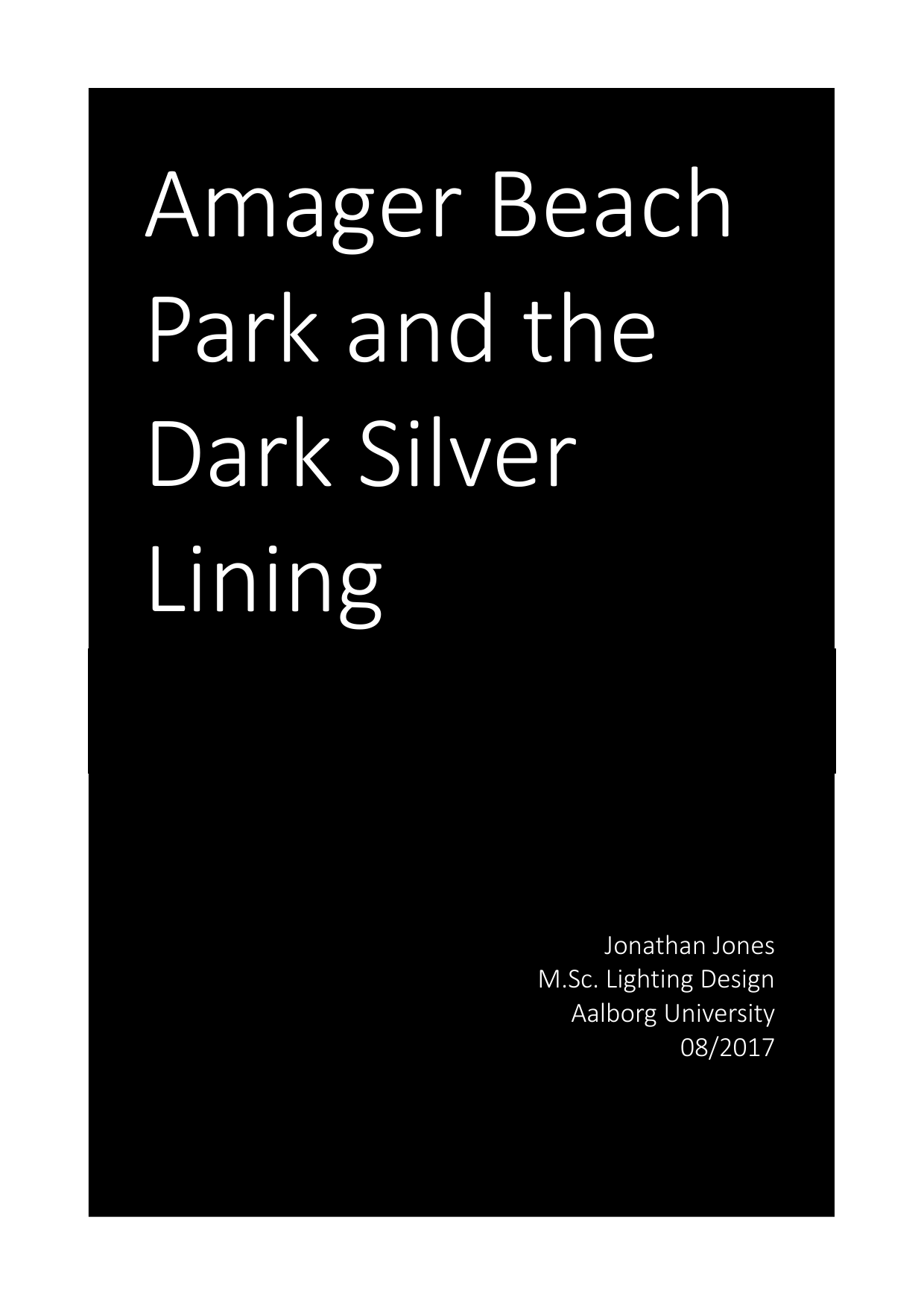
Amager Beach Park and the Dark Silver Lining
Author
Term
4. Term
Education
Publication year
2017
Submitted on
2017-11-28
Pages
85
Abstract
This project is about making lighting adapt to the darkness rather than conquer it. During walks to the beach it came to my attention that the lighting in certain zones of Amager Beach Park (ABP) were lacking any form of immediate lighting. From a survey by the Amager East Local Committee it was possible to see that I was far from the only one that had thoughts on that matter. Yet those whom were concerned about darkness were also concerned about the amount of light they would be exposed to. Through gathering theory about lighting design and how we perceive light, the project continued into the analysis phase. An analysis of ABP was done according to the historical and architectural aspects, while a categorisation of the current users was taken in order to define a user group to design towards. Using qualitative analysis of similar projects, observations, and analysis of the current light conditions, a research Question arose: “To what extent can a lighting design preserve the night views, while enhancing the level of orientation for slow movers throughout Amager Strandstien?” To do this some design experiments were completed on the different aspects of the lighting e.g. angle of the light source, intensity. These were done according to the design criteria. The final design was a composition of the results from the different design experiments and the design concept. A line of light that guides through darkness in a way that enables the visitor to view its surroundings, while at the same time perceiving other visitors as they traverse through the darkness momentarily exposing themselves in narrow beams of light. The same light would enable the visitor a sense of scale to the path in the darkness.
This project is about making lighting adapt to the darkness rather than conquer it. During walks to the beach it came to my attention that the lighting in certain zones of Amager Beach Park (ABP) were lacking any form of immediate lighting. From a survey by the Amager East Local Committee it was possible to see that I was far from the only one that had thoughts on that matter. Yet those whom were concerned about darkness were also concerned about the amount of light they would be exposed to. Through gathering theory about lighting design and how we perceive light, the project continued into the analysis phase. An analysis of ABP was done according to the historical and architectural aspects, while a categorisation of the current users was taken in order to define a user group to design towards. Using qualitative analysis of similar projects, observations, and analysis of the current light conditions, a research Question arose: “To what extent can a lighting design preserve the night views, while enhancing the level of orientation for slow movers throughout Amager Strandstien?” To do this some design experiments were completed on the different aspects of the lighting e.g. angle of the light source, intensity. These were done according to the design criteria. The final design was a composition of the results from the different design experiments and the design concept. A line of light that guides through darkness in a way that enables the visitor to view its surroundings, while at the same time perceiving other visitors as they traverse through the darkness momentarily exposing themselves in narrow beams of light. The same light would enable the visitor a sense of scale to the path in the darkness.
Documents
